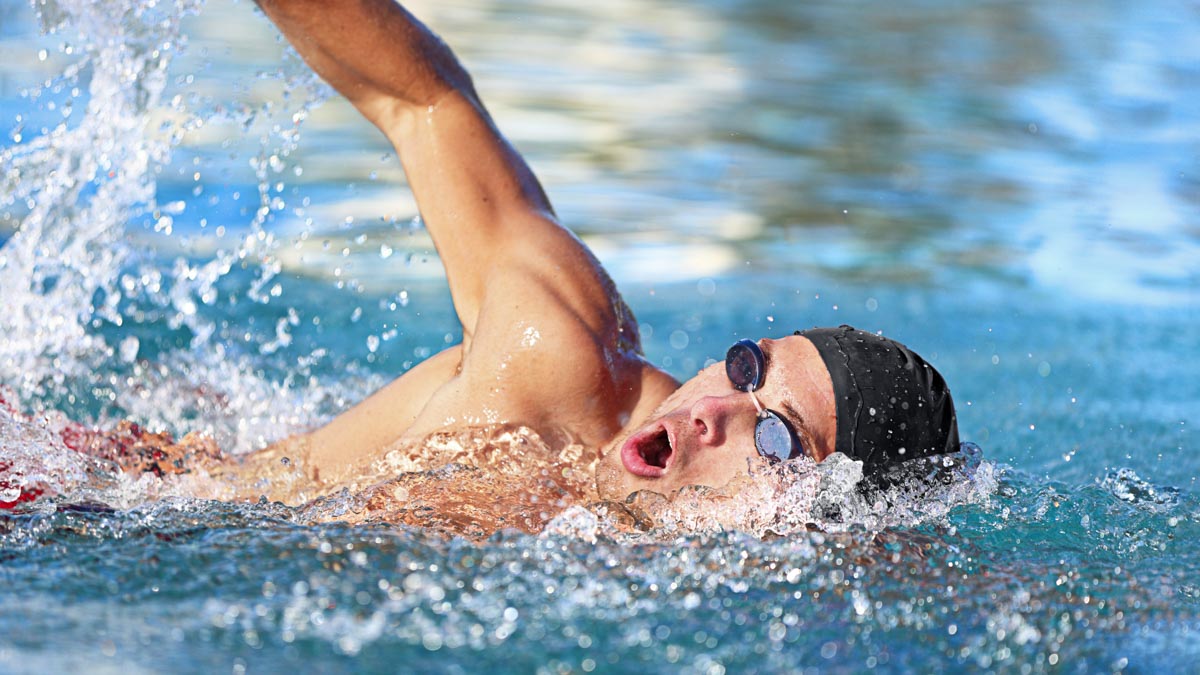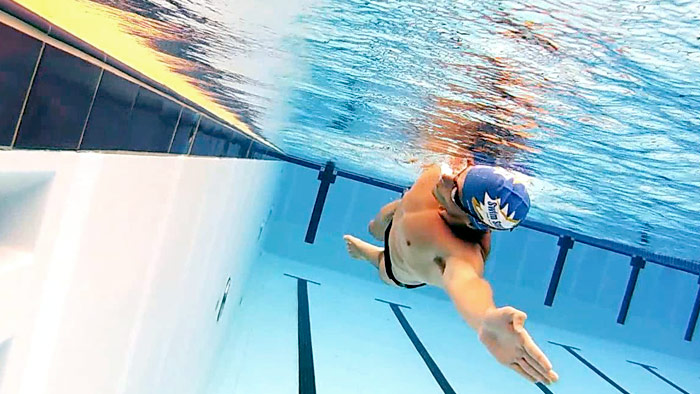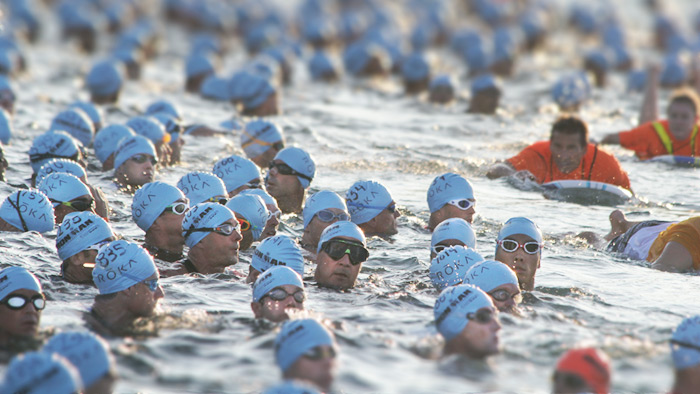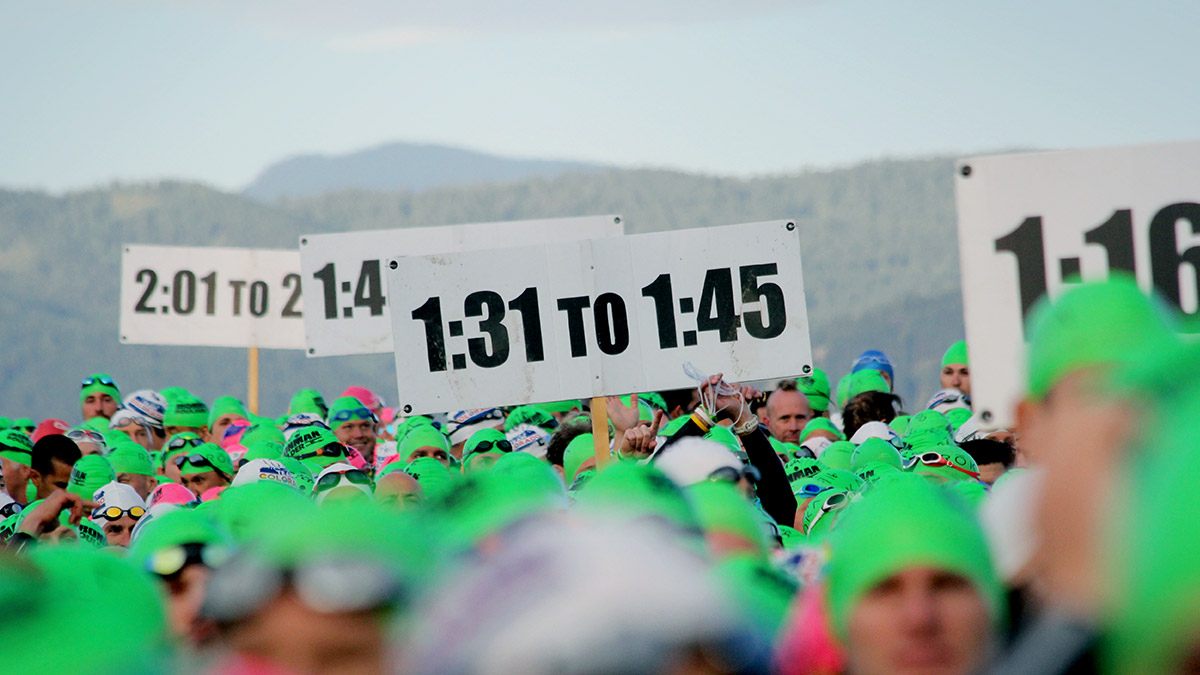Swimming is a polarizing discipline in the triathlon community. Love it or hate it, there is always a search for the magic technique that can give you that extra edge. Can it be as simple as breathing effectively in the water? A quick search on Google Scholar alone indicates there have been over 17,500 published research papers on breathing, with 6,400 of them being directly related to sports performance just in 2019. Let’s look at some theoretical principles and give you some practical tips for effective breathing in swimming.
Aerobic Capacity
An athlete’s aerobic capacity is affected by the strength and size of their heart and lungs, density of capillaries and mitochondria in their muscle, concentration of hemoglobin, and the activity of their aerobic enzymes. All of these can and are enhanced with training to some extent.
Aerobic Utilization in Swimming
Many triathletes I have worked with come to the pool, jump in, gas out and say to me, “I’m just not fit enough.” Really? You can ride hundreds of miles a week, go for a run at the end of your races, and you’re telling me you’re not “fit” enough? While aerobic capacity does have an impact on performance, the ability of an athlete to utilize their capacity is just as important, if not more important. The problem, in other words, is not the size of the tank but how the athlete is utilizing it.
Fortunately, breathing well in the water isn’t a challenging skill to learn. It simply requires some awareness and practice. To start, think about how you breathe on land. If your strength is riding, for example, think about how you breathe when you’re riding. You’ll probably imagine the sensation of relaxed air in and continuous relaxed air out. When athletes start swimming, many attempt to inhale too much and too fast, then hold their breath and are left to exhale incompletely (usually with great force) just before they turn to inhale again.
Try breathing like this as you’re reading, and you will quickly see why swimming can be so hard for some athletes! Before long, you are scrambling, believing you need more air in—but just as big an issue is the buildup of carbon dioxide because you are not exhaling adequately.
Oxygen Debt
Oxygen debt is simply the lag between the oxygen you require and the oxygen available—and just like on land, your respiration rate will increase with intensity. In swimming, this presents as discomfort with breathing, especially in the initial warm-up as your body searches for oxygen to supply your moving muscles. You can combat this initial debt by gradually building intensity in your warm-up. Also, try to be flexible and breathe on demand when you are swimming, rather than trying to maintain a particular rate.
Awareness
Once athletes are educated about effective breathing in swimming, possibly the biggest game-changer is increasing awareness. Listening to yourself inhale can be all it takes in many cases, but you can also focus on feeling, hearing and maybe even seeing bubbles during exhaling. From there, it is all about continually executing with deliberate practice: relaxed air in, continuous relaxed air out.
Focus
Effective breathing also requires some focus. Before diving into your next swim session or race, get focused on your breathing. This is especially important when you’re nervous or under pressure; bring your focus back to breathing, and you’ll find yourself calming down immediately.
I could have focused this article on body position, the timing of inhalation, the hand and forearm angles during the catch, the power phase, or the dreaded kick—all of which play an important role in swim performance—but for most athletes I’ve worked with, focusing on anything other than effective breathing results in diminishing returns. So I challenge you to focus on simply breathing effectively when swimming; you might be surprised how many components of your stroke begin to come more easily.









